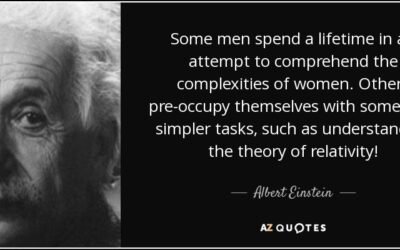The Background
Since times immemorial, every human society was and is characterised by social differences – be it rich/poor, literate/illiterate, caste, religion and more prominently by gender difference. Across ages, women were never considered equivalent of men. Despite this inequity, women have proved themselves and ruled over every domain across times.
My intention is to define how women made a difference in ancient India, their role in the society, status, their glorious past and how they continue to bear the weight of our society.
Role of women
The ancient Indian society saw woman in varied roles and important ones at that compared to the modern society. A few facts:
Education – Many women were highly educated and well-versed in writing Vedas and the Sanskrit texts that were needed for the society. Woman scholarly leaders (Brahmanandini’s) followed vedic life-styles across their lives and remained bachelorettes.
Administration – Queen Naynika (Satavahana dynasty) ruled her kingdom until her minor son came of age. Queen Rani LaxmiBai ruled Jhansi after the death of her husband in 1835. She also led a valiant fight against British tyranny in the 1857 uprising.
During the vedic period women were responsible for education of their children and protecting them (in the modern society too). Some societies also saw women gathering food alongside men (we can see this in North-Eastern India, even today). This ensured that the lives of women were more dignified and gave them better educational opportunities and religious freedom.
The Rig vedic period saw women having equal social & property rights. They played the role of bodyguards in the Mauryan period and were mentioned as life givers and as Goddesses of nature in the Buddhist texts.
However, there are many contradictory mentions of the role of women in the ancient vedic period. On one hand it is written that they were given equal social status and played the role of protectors, on the other hand, it is written that women were to be kept inside homes and they would fulfil family needs and take care of children.
Status of Women
The social standing of woman has changed drastically over a period, however, the see-saw way of upgrading and downgrading the status of women has been the bane of our civilisation.
In the times of Indus Valley Civilisation, women were worshipped as goddesses and they had the highest respect in the society as well as homes. In fact, educating the woman child was mandatory and this was considered essential for marriage.
In a stark contrast, later on, woman were expected to offer themselves as sacrifice on the pier of the husband (the practice of Sati); and woman were also expected to have male children to further the progeny and being the carriers of the last rites of lineage.
I am not sure why women couldn’t play the very same role.
Further to this, men were not expected to maintain a high level of fidelity, but women were. Changes in the social strata ensured that priests (men) replaced women in their duty of performing rituals to gods.
One bright spot in the ancient history of women was that the conditions of widows improved due to lowering of marrying age and widows were provided with means to sustain their life & education.
The Glorious Ancient Past of Women
In the ancient Indian civilisation, women have always held a very respectable place and enjoyed higher status. The Dravidian culture empowered women to manage and control all the affairs of a household in addition to contributing to the society in a meaningful manner.
The greatest epics – The Ramayana and The Mahabharata have depicted women in the light of dharma, prosperity and pleasure.
Many women in the ancient past have contributed to the society, so much so that the patriarchal society is still doing a rethink on the role of woman in a civilised society.
The only woman to have ruled the Delhi Sultanate – Razia Sultana, the only woman to have fought Emperor Akbar – Maharani Durgavati, and the first woman teacher of India – Savitribai Phule and many others are prime examples of a woman’s spirit, heroism, sacrifice and persistence.
A look at timelines
2300 BC – 1750 BC – The Indus Valley Civilisation.
Women and men had equal status. Pashupati Mahadeva, the major deity, and the goddess worship were born here.
1500 BC – 1000 BC – The Rig Vedic Age.
The status of women had somewhat fallen coming to Rig Vedic Age. However, so good things did happen like widow remarriage came into being and women were allowed into politics. ‘Seer’ (position given to women who created vedic hymns) title was given to a few great women like Vishwavara, Lopamudra, and Ghosa.
1000BC – 500 BC – Later Vedic Age,
This was a downfall age for women as it saw certain demolition in the authority of women. Political positions, right to education and right to knowledge were seized.
600BC – Medieval Age.
Dynasties like Nanad, Maurya, Magadha ruled over this period. Dowry was not prevalent, although it was not totally absent. Women participated in wars and matrimonial alliances between rulers to further earthly dominion conquests was rampant. This was a contrasting period for the stature of woman as every kingdom had its own rules to define or refine their rights.
My Conclusion
In the ancient Indian civilisation, women were considered the almighty or ‘Shakti’ and had a much more dignified existence than we see today. The rights and stature of women have steadily diminished as we come into today’s modern life.
Although women are central to every family and every life that exists today, the modern society has turned aggressively patriarchal, in general, and it is the woman who suffers, always.
Irrespective of women making strides into every male domain, they are still treated as weaklings across the society. Of course, the number of successful women who have broken the shackles is quite low to make a difference.
My steadfast opinion is that we should work towards gender equality rather than women empowerment.





Informative write up.
Thank you sir, but I know it could have been elaborate… the research took quite some time though.
@anil
As dawn breaks on this day, the world is bathed in the glow of a new beginning. It’s a day not just marked on calendars, but etched in the very fabric of our existence – a day that celebrates the resilience, the strength, and the indomitable spirit of women everywhere.
Picture this: The sun rises, casting its golden hues upon a world that is alive with possibility. As we take a step into this new day, we are reminded of the countless women who have paved the way before us, who have shattered glass ceilings and broken barriers, who have dared to dream and dared to defy.
In this cinematic narration, we see women from all walks of life, each with their own story to tell. We see the mothers who rise before the sun, their hands calloused yet gentle as they nurture and care for their families. We see the daughters, the sisters, the friends – each a beacon of light in a world that sometimes feels shrouded in darkness.
But it’s not just about the roles they play or the titles they hold. It’s about the fire that burns within them, the fire that refuses to be extinguished, no matter the challenges they face. It’s about the courage to speak up, to stand tall, to demand equality and justice for all.
As the day unfolds, we witness acts of bravery and acts of kindness, each one a testament to the strength of the female spirit. We see women breaking free from the chains of oppression, reclaiming their power, and standing together in solidarity.
And as the sun sets on this day, we are reminded that the fight is far from over. But with each step we take, with each voice raised in unison, we move one step closer to a world where every woman is free to soar as high as her dreams will take her.
So here’s to the women – today, tomorrow, and always. May we continue to celebrate their triumphs, honor their sacrifices, and stand by their side as they shape the world into a better, brighter place for us all.
Tx|AD
Very well said @Abhi.
Thank you for your kind words.
Indeed a great write up tht refers to the women of past and the women today. I personally feel there’s still a lot to change! As gender norms still exists in our society, dealing with rigid mindsets is truly a challenge. Every human, irrespective of their gender..should be given the right to build a life of their own. A life, tht they’re proud of!
True Vijaya, We should adress “gender equality” and not “women empowerment” or “women rights.”
History being my favorite subject from schooldays till now, you have depicted the indian woman pretty well in this nutshell article. Super maama.
Thanks Raju, for your kind words.